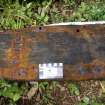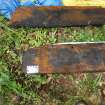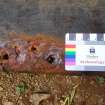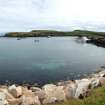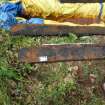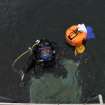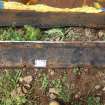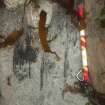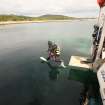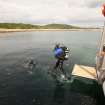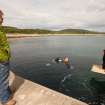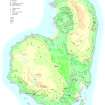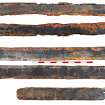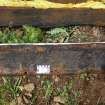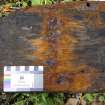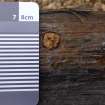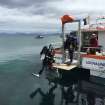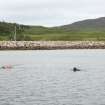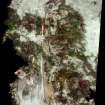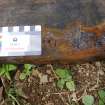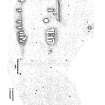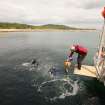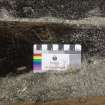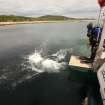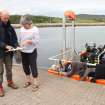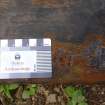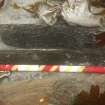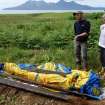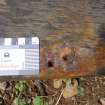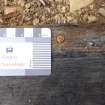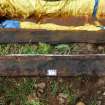Following the launch of trove.scot in February 2025 we are now planning the retiral of some of our webservices. Canmore will be switched off on 24th June 2025. Information about the closure can be found on the HES website: Retiral of HES web services | Historic Environment Scotland
Unknown: Galmisdale Bay, Eigg, Sea Of The Hebrides
Craft (Period Unassigned)
Site Name Unknown: Galmisdale Bay, Eigg, Sea Of The Hebrides
Classification Craft (Period Unassigned)
Alternative Name(s) 'Dubh Ghleannag'; 'an Dubh Ghleannach'; Galmisdale Pier; Eigg Pier
Canmore ID 213713
Site Number NM48SE 8005
NGR NM 48497 83887
Datum Datum not recorded
Permalink http://canmore.org.uk/site/213713
- Council Highland
- Parish Maritime - Highland
- Former Region Highland
- Former District Maritime
- Former County Not Applicable
Note (4 October 2001)
NM48SE 8005 48497 83887
N56 52.691 W6 7.709
NLO: Galmisdale [name centred NM 480 837]
Galmisdale Point [name: NM 485 837]
Eigg [name centred NM 47 87].
The boat in Galmisdale Bay was first reported in spring 2001 by the local lobsterman, who had been told it was clinker built and held together with wooden pegs, not iron nails. It only became visible in very low tides and when the sands shifted in a particular way, and there were only two recorded sightings over the last century, the last about 40 years ago.
Camille Dressler has reported the re-emergence of the boat in three feet of mud 'about 5m' SE of the intended line of the new causeway (at an estimated location of NM 4852 8390). Brig Lancaster, a carpenter on Eigg, has retrieved a timber, which has been described to me as being broad for a boat timber, hand finished, with a wooden dowel driven into it. A lump of corroded iron was found within the boat.
The wreck is locally believed to be that of the Dubh Ghleannag, which was owned by an 18th-century MacDonald of Glenaladale and is commemorated in Gaelic poetry. It was traditionally wrecked off Kildonnan Point [Kildonnan: NM 490 851] at the mouth of Galmisdale Bay in 1817.
Information from RCAHMS (SDB), 4 October 2001.
B R S Megaw 1961; C Dressler 1998.
Field Visit (17 October 2001)
The remains of a wooden boat was exposed to the N of the pier at Galmisdale, during an exceptionally low spring tide. The exposed timbers measure 6m in length, from E-W and 2.7m in breadth, overall and up to 0.5m in height. Along the N side of the boat are at least 9 wooden ribs or frames and attached to these by trenails and metal rivets is a section of planking, at the E end. The planking continues E beyond the frames and is attached to what is probably the hollowed stem post. There was one possible frame exposed on the S side of the boat. A piece of the planking (possibly oak) had been removed and showed signs of a waterproofing residue on the outer side and caulking on the inner face and in a knot hole. The rivet holes were both square and rounded in section. There were circular impressions on the outside of the plank from the rivet-heads and distinctive rhombic-shaped rove impressions on the inside face. There were woodworking tool marks on both faces of the plank and the beveled end is part of a scarf joint with clear adze marks. A concreted metal axe and a piece of granite that may have been used as ballast were found within the exposed remains. The plank, axe and ballast were deposited with the National Museums of Scotland (reference number RM-01-183).
EIGG01 664
Visited by RCAHMS (AGCH) 17 October 2001
Field Visit (31 October 2001)
Location established by GPS as NM 48497 83887: below low water mark.
Information from RCAHMS (AH), 31 October 2001.
Reference (2002)
(Location cited as NG [NM] 4849 8388: no associated artifacts noted). The 'remains of a wooden-built boat... off Galmisdale Pier' were initially reported to RCAHMS and were examined by Steven Birch (for Martin Wildgoose) in advance of construction works for a new pier and causeway. They are covered by about 4.6m depth of water at Mean High Water but almost dry out at Low Water Springs. The wreck lies about 100m NW of the usual anchorage for local fishing vessels and visiting boats and is exposed to the NE, although Castle Island and Garbh Sgeir afford some protection.
In autumn 2001, Mr Brig Lancaster (the carpenter on Eigg) recovered a detached length of strake and an iron concretion from the wreck. The strake was found to incorporate a 'dowel' [presumably a trenail] and the concretion was broken open to reveal an iron axe, which is now undergoing conservation at the National Museums of Scotland. The strake has since been examined by both David Caldwell (NMS) and Anne Crone (AOC Archaeology). It bears evidence for both 'trenail' and 'metal rivet' fastenings, as well as 'some form of waterproofing residue' on the outer face and 'a number of tool and woodworking marks' internally. One end was bevelled (apparently for a scarf joint) and the other was severely degraded by drying when exposed. The representation of only thirty or forty growth rings within the cross-section precludes the determination of a dendrochronological date.
The remains were resurveyed by RCAHMS during [equinoctial] low water in October 2001, while still beneath about 0.3m depth of water. Ten ribs or frames, strakes or planks, and parts of the stem or stern area were recorded.
The wreck was recorded by Mr Birch between 10th and 14th December 2001, when a photographic and video record was taken. In February 2002, the Highland Council Diving Unit laid buoys around the site and placed sandbags to protect the remains. Additional structural timbers were noted in areas of continuing erosion.
The visible remains comprise elements of articulated structure, detached timbers and ballast stone. They are aligned NE (stem) - SW (stern) and represent a vessel of measuring about 12.2m along the keel. Scour-pits were noted around the major elements (notably the stem and stern) and the timbers are in good condition although marine fouling (by barnacles, worm-casts and gribble-boring) indicates periodic exposure. The stern post was missing; a concretion indicates the end of the keel and may incorporate part of the rudder with its concreted ironwork. The garboard strake is here set at a steep angle from the keel and protrudes beyond the end of the deadwood.
Forward of this point, three strakes have been disturbed, possibly by anchor-dragging. Each measures about 0.2m in breadth by between 30 and 40mm in thickness; evidence for both square-sectioned iron fastenings and rhombic roves was apparent. The strake recovered by Mr Lancaster apparently came from this area.
In all, nine 'frame-timbers' were exposed along the port side, their exposed ends being both eroded and infested. These measure about 0.18m in maximum depth by between 100 and 150mm; their spacing varies considerably.
At least nine strakes (still apparently articulated) were identified towards the stem; they appear to have splayed outwards with the failure of their iron fastenings. At least one of these ('including the garboard strake') apparently remains fastened to the keel at the stem, and presumably also elsewhere. Immediately above the keel and at the stem there are the eroded remains of a curved piece of deadwood or composite stem. Partly overlying this, there is a large structural timber which measures about 1.7m in length by 0.22m 'in section', and is pierced by three holes of 20mm diameter. The end nearest the stem has broken away, while the other end is slightly bevelled. This timber is slightly oval in section and the outer face displays toolmarks. Where exposed at the stem, the keel is V-shaped in section, measuring 80mm across at the top, 60mm across at the bottom, and 150mm in depth. The keel terminates in a scarf joint against the (missing) stempost.
The ends of three 'frames' are exposed on the starboard side, and appear to correspond to three noted to port. Otherwise, the starboard side displays fewer exposed timbers, only two lengths of overlapping strake (one of them having a feathered scarf joint) being exposed amidships.
Excavation of a small exploratory trench amidships revealed further details of three of the 'frame timbers' noted previously on the port side; strakes surviving in situ (with a scarf joint, fastening holes and caulking residue), two ballast stones and a small concretion were noted.
The nail-holes in the strakes are about 6mm square and set between 0.35 and 0.4m apart; the impressions left in the wood by the rhombic or square roves measure about 30 by 20mm. Holes (measuring between 8 and 10mm square) for larger iron nails have been noted in one of the 'frame timbers'. Two trenail-holes of 20mm were also noted in the 'frame timbers' and possible smaller examples elsewhere. Some of the trenails survive within the structure, but the iron rivet fastenings and nails have apparently been reduced by corrosion to no more than mineralised residue, although they possibly survive intact within some of the concretions and beneath the surface of the seabed.
Timbers which have probably been recovered from this wreck are also to be seen on shore. One such timber measures 185mm in length, 134mm in breadth and 180mm in thickness, and displays evidence of trenails (of diameter 20mm) and of square-sectioned nails fastenings.
The constructional features of this vessel may be summarised as follows:
Keel: this single member appears relatively small for the size of vessel. It was probably reinforced with a keelson.
Frames: these are of typical 'grown' section and have dimensions appropriate to a vessel of this size, measuring between 1.85 and 2m in length. The relatively close spacing of the ribs at around 40% of the length from the bow may suggest either the location of the mast at a point appropriate to the use of a fore-and-aft rig or an area of extensive repair-work. The ribs are joggled to accept clinkered strakes, the joggles being between 25 and 30mm deep and becoming slightly shorter in length near the turn of the bilge. The recovered frame has nine joggles (this being the minimum number strakes within the turn of the bilge); limber holes were noted in this rib and at least one other. (The timber used for the keel and ribs is not noted).
Strakes: these were formed of planks joined by feathered scarfs, but the lengths of these timbers could not be determined. They were worked from fast-grown oak and appear to have slight caulking-grooves within the lands. It has not been determined whether they were sawn or radially split, but toolmarks and 'some form of preservative residue' were noted. The vertical part of the garboard strake beside the aft deadwood appears to be orientated correctly to meet the sternpost while this timber butts flush with the keel at the suggested mast position.
Deadwoods: the form of these timbers indicates a moderately raked sternpost and possibly a slightly less raked stem with a projecting forefoot.
Fastenings: most of the fastenings noted were of iron (in various sizes and apparently typically clenched over rhomboid roves) although some trenails were present. There was some evidence for secondary nailing ('doubling up') and some of the trenails may have served to fill old nail holes.
This preliminary examination suggests that the vessel was evidently a 'vernacular craft of some significance' and of 'better than average' quality. None of the diagnostic features suggest that this was a birlinn, although it may have links with 'an Irish style of building' and the use of oak rather than pine or larch may be significant. The vessel may be seen as a fore-and-aft rigged vessel of the iubrach type, rather than a (square-rigged) birlinn. The possible equation with the loss of the 'An Dubh Ghleannach' in 1817 may be significant.
[RCAHMS plan and wreck detail reproduced; relevant Gaelic poetry by Alasdair Mackinnon quoted in translation and historical accounts considered in some detail. Possible means of preservation are considered].
NMRS, MS/1027/4.
Project (2013 - 2015)
Project SAMPHIRE was designed to bring professional marine archaeological expertise into local maritime communities. The central focus of the project was to record the unique knowledge of maritime cultural heritage sites on the seabed (and intertidal zone) that is held within local communities. This was done through a programme of face-to-face community engagement, allowing knowledge exchange in both directions. The reported sites were then investigated by the SAMPHIRE Project team with the maximum involvement of local community members at every level, including fieldwork and desk-based research. The project aimed to foster a wider understanding of and interest in local maritime heritage and to promote the stewardship of this valuable local resource.
Diver Inspection (5 July 2014)
NM 48497 83887 A visual inspection was undertaken, 5 July 2014, by Wessex Archaeology of the wreck site in Galmisdale Bay. The work focused on assessing the condition of previously identified wooden boat remains, which have been sandbagged in situ since initial investigations in 2001.
Two Wessex archaeologists were assisted by volunteers to carry out the inspection. Due to the shallow conditions at the site, snorkel survey was employed for most of the inspection. A single dive and one snorkel investigation were conducted during the inspection. The in situ preservation plan put in place in 2001 appears to have been successful. Though never intended as a long term conservation measure, the sandbags have remained in place and prevented undue erosion on the
site. However, the site is undergoing some erosion and the wreck is slowing becoming re-exposed. The sandbags were judged to be in varying conditions, some remain intact while others have completely disintegrated. Though most of the wreck is still covered where portions of the wreck site are exposed, the hull timbers are experiencing degradation,
possibly at an advanced rate.
Archive: NRHE
Funder: Historic Scotland
John McCarthy and Andrew Roberts - WA Heritage
(Source: DES, Volume 18)
OASIS ID: waherita1-298708
Diver Inspection (1 October 2015 - 1 April 2016)
NM 48497 83887 A range of tasks were undertaken, 1 October 2015 – 1 April 2016, by WA Coastal and Marine on the Galmisdale wreck. These tasks including the retrieval of previously recovered timbers believed to be from the wreck, as well as a monitoring inspection and sandbagging of the wreck. The timbers, recovered from storage on Eigg and the Highland Council in Inverness, were to be recorded and subjected to dendrochronological analysis by AOC Archaeology.
Archive: NRHE
Funder: Historic Environment Scotland
John McCarthy and Isger Vico Sommer – WA Heritage
(Source: DES, Volume 18)






































